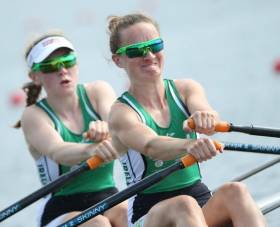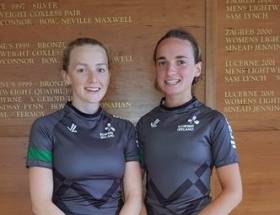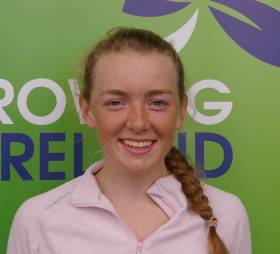Displaying items by tag: Trakai
#Rowing: Ireland’s double of Margaret Cremen and Aoife Casey won their B Final this morning at the World Rowing Junior Championships in Trakai, Lithuania. The race developed very early into a battle between France and Ireland, with Ireland less than a boat length ahead for much of the 2,000 metres. In the sprint finish, France could not overtake the Irish women.
The result places Ireland seventh overall of the 28 crews which started.
World Junior Championships, Day Five, Irish interest
Women
Junior Double Sculls – B Final (Places 7 to 12): 1 Ireland (A Casey, M Cremen) 7:38.31, 2 France 7:39.65, 3 Netherlands 7:42.20, 4 Ukraine 7:42.25, 5 Japan 7:42.85, 6 Greece 7:44.73.
#Rowing: Ireland’s Aoife Casey and Margaret Cremen will compete in the B Final of the women’s double at the World Rowing Junior Championships in Trakai, Lithuania. In this morning’s semi-final, the Skibbereen/Lee crew took fourth, just under two seconds behind Chile, who took the third qualification spot. Britain were impressive winners, ahead of Italy. Ireland took over in fourth in the second half of the race, but while they finished fast, they could not force themselves in the trio which qualified for the A Final.
World Junior Championships, Day Four (Irish interest)
Women
Junior Double – Semi-Final Two (First Three to A Final; rest to B Final): 1 Britain 7:21.24, 2 Italy 7:25.05, 3 Chile 7:27.62; 4 Ireland (A Casey, M Cremen) 7:29.61, 5 France 7:30.71, 6 Netherlands 7:31.93.
#Rowing: Ireland have qualified for the semi-finals of the women’s double sculls at the World Rowing Junior Championships in Trakai, Lithuania. Aoife Casey and Margaret Cremen finished third in their quarter-final. Canada, who led from the early stages, won well. Ireland had tracked them, holding second from before halfway until the final stages when the Netherlands got ahead of them.
World Rowing Junior Championships, Trakai, Lithuania, Day Three (Irish interest)
Women
Double Sculls – Quarter-Final Three (First Three to A/B Semi-Finals; rest to C/D Semi-Finals): 1 Canada 7:23.78, 2 Netherlands 7:29.52, 3 Ireland (A Casey, M Cremen) 7:30.27; 4 Austria 7:33.56, 5 New Zealand 7:36.51, 6 Estonia 7:52.65.































































